Nov 14th Conditions and a Near Miss Analysis
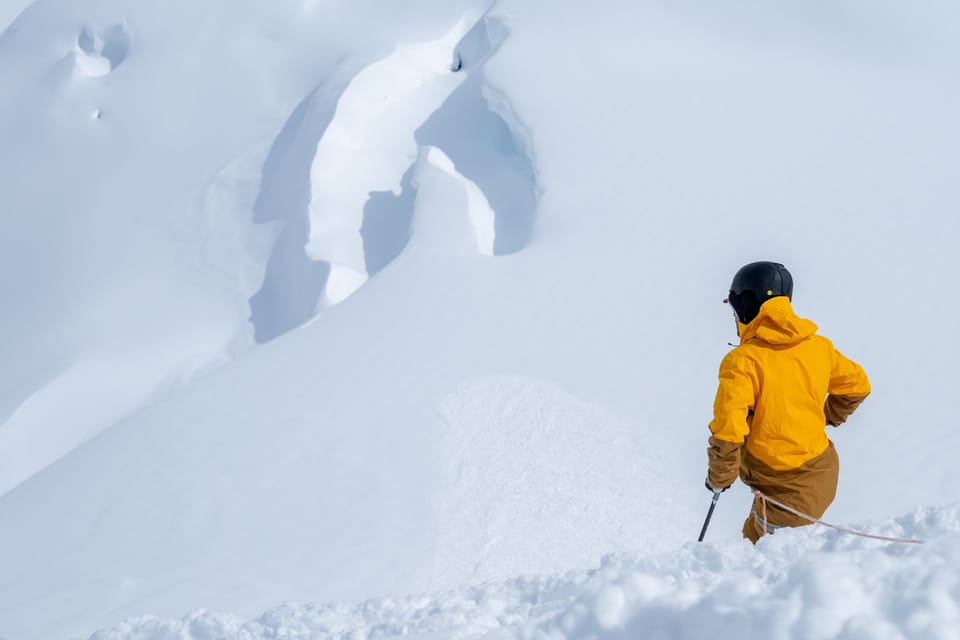
Snow is stacking up and this is one of our final “pre-season” newsletters! We’ve got an interesting story from Eric and Brian’s spring Alaska trip with a few good learning points. We’d also like to remind you that we have TWO upcoming avalanche rescue refreshers!
- Nov 24th
- Nov 30.
We are anticipating plenty of snow on the ground for these courses to run. If you’re on the fence, sign up ASAP so you still have a spot. The nice thing about doing it early is you don’t have FOMO about missing good skiing - it’s an excellent training opportunity!
We also invite you to save the date for the evening of December 6th! We’ll be helping with the season opening SkiUphill Snowpack Discussion and excitingly, it will be hosted at the Sea to Sky Gondola Summit Lodge! More details coming next week!
Current Conditions:
Last weekend’s storm did a number on our snowpack with high freezing levels. Prior to the weekend, folks were reliably skiing just above 1200m with decent coverage at treeline. The rain brought our snow line a few hundred meters higher and snowpack was lost at TL and Alpine elevations - dropping us from ~70 to ~30cm base.

Luckily, Monday cooled off and we’ve had significant snowfall at TL and above since. On Wednesday in the Squamish area, we drove to about 1300m and found ~50-70cm of storm snow sitting over a 30cm rain crust over a saturated lower snowpack. The new snow is wet and heavy and will provide an excellent base! Strong winds have been transporting snow, especially in the alpine with windslabs forming in isolated areas. Stormy weather has kept us from getting much for alpine observations but it’s likely that most of what fell as rain in the valley is stacking up snowpack in the high alpine! Whistler is reporting a ~100cm base at their Pig Alley weather station.
Currently the forecast for the weekend looks unsettled with clearing breaks that might give good opportunities for skiing. Snow continues to fall with freezing levels at 1200m and dropping. The effects of strong wind will be noticeable, especially at ridge crest so watch carefully for wind slab! Fingers crossed that the tap stays on each evening and our snowpack continues to build.
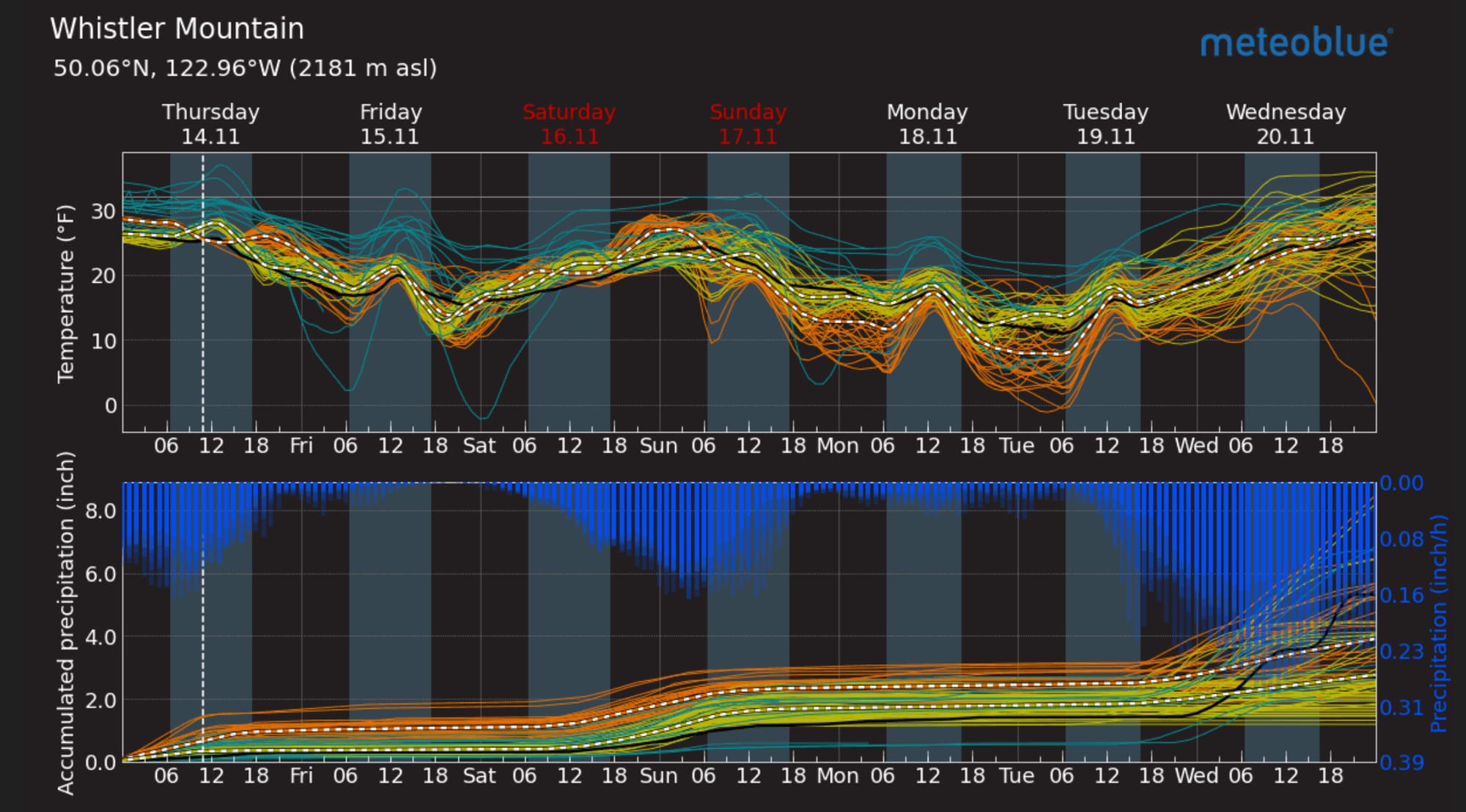
Early season hazards are still definitely an issue. Especially in wind-swept areas, expect to encounter shallow rocks! Glaciers are getting to the really scary time with ~1m of snowpack and lots of wind transport. Crevasses will be bridging over completely but VERY thinly! Tread carefully if you get up high and keep the probe handy.
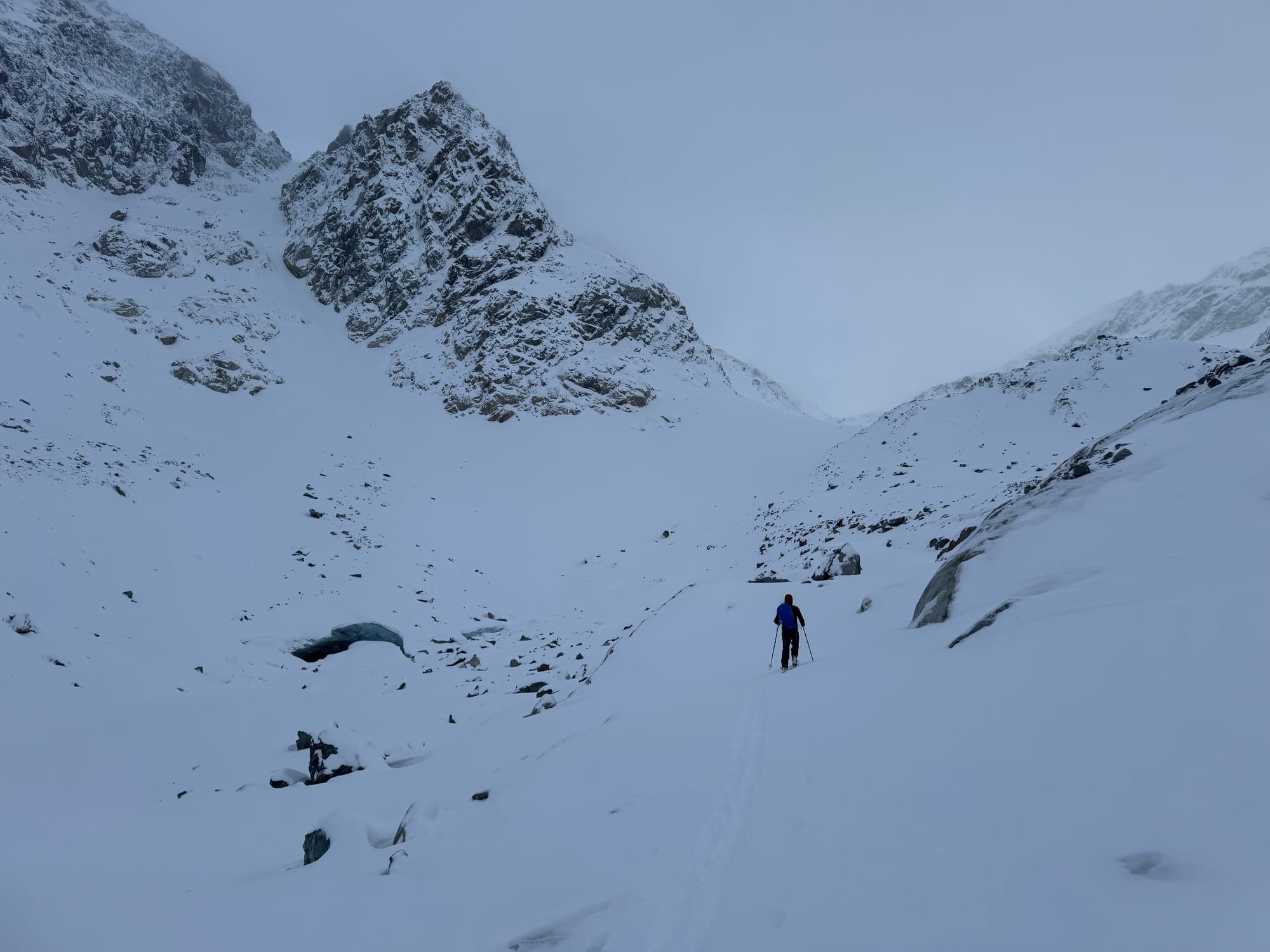
Mountain Weather Forecast:
If you like to dive deep into weather each week, it’s likely you use Avalanche Canada’s Mountain Weather Forecast. This is an awesome product that goes more in-depth than the basic forecast and relies on a meteorologist to interpret the weather models. Environment Canada, who produces it, recently discontinued it during the summertime and announced it will stop entirely in May 2025. As we understand it, this is not an AvCan decision but one by Environment Canada. If, like us, you use and value this service, we have been recommended to leave comments via this form: https://weather.gc.ca/mainmenu/climate_contact_us_e.html
Near Miss Analysis:
Most of our articles so far have focused on weather and snowpack but we also want to talk about how we move through the mountains! Mistakes happen among amateurs and pros alike and what sets a good athlete apart is the ability to reflect on and learn from those mistakes.
This near miss occurred in April 2024 off the Eldridge Glacier in the Alaska Range. We were a group of four and had spent several days skiing out of our base camp but had yet to really push into bigger terrain as we were finding the snowpack challenging. Clearing conditions however had us excited to try for a bigger day. Our planned tour would take us up a big south couloir to ridge crest, up a peak, then down a big north facing rib - a complicated and heavily glaciated tour.
Arriving at ridge crest, we realized there wasn’t a simple route to the peak from the saddle, but a beautiful north facing run exposed itself below us. Without much discussion, the plan changed and we decided to ski the face below. Then we’d climb a similar one further along to access the summit.
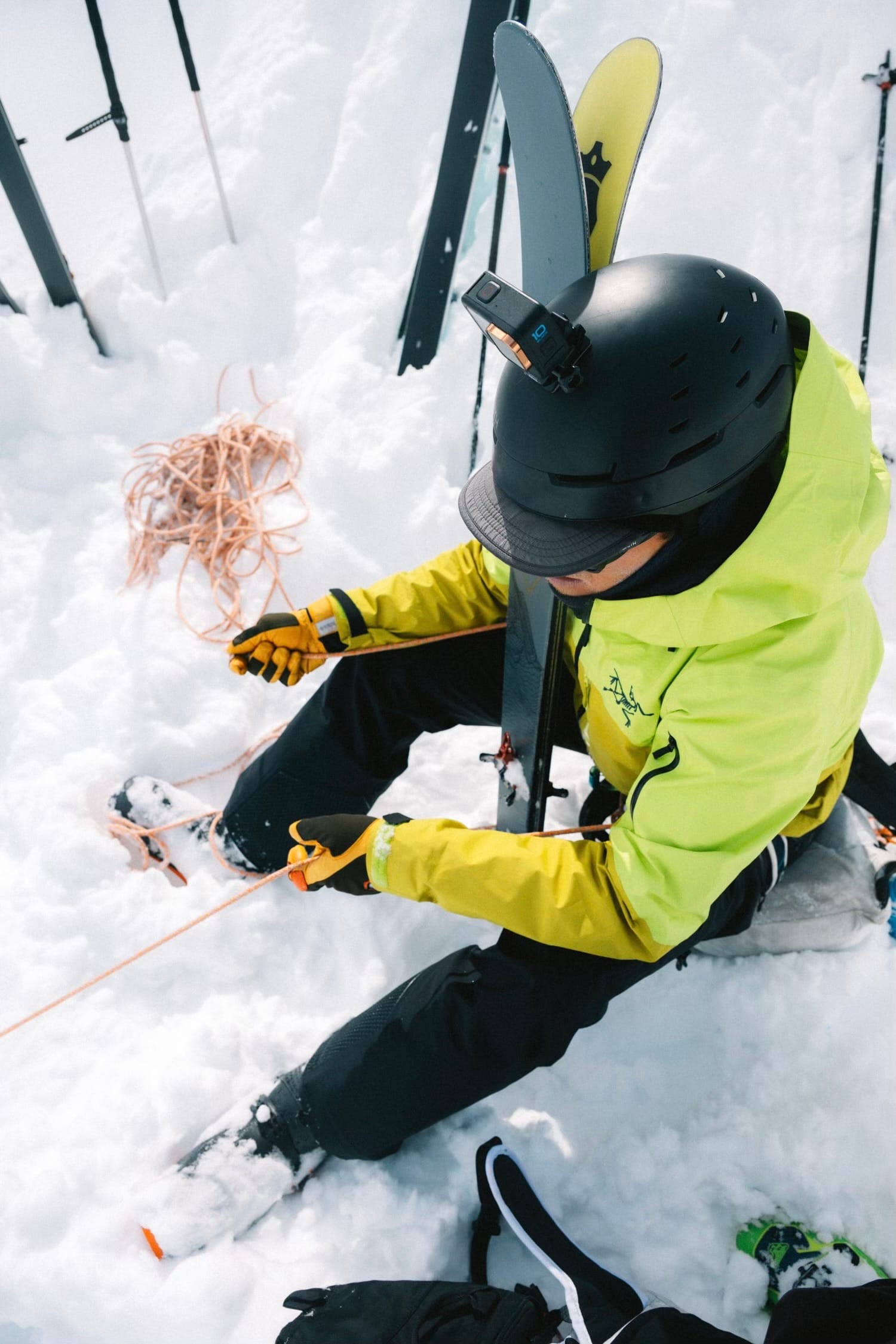
The snow on the line was inviting. This was our first taste of north facing on the trip so far and it was glittering and soft underfoot. A quick discussion about our route while we were transitioning and then it was time to ski. We decided Pat would ski first to get into position for photos and then we’d drop in one at a time. Someone suggested a belayed ski cut. Someone else suggested it wasn’t worth bothering. A quick discussion and ultimately the rope ended up coming out.
Brian sat on the back side of the ridge as the anchor while Pat tied in. Max and I observed from the top while Pat dropped into the line, about 15m down. He made a few big bounces and turns, cutting across the slope. He came to a stop and nothing moved. I could see the slope below rolled off just a touch further and suggested one more big left turn towards the rocks he’d be shooting photos from. As Pat made that final turn on the convexity, a crack shot across the slope and slid size 2.5 across the ‘shrund and well across the flat glacier below. Brian belayed Pat back to the ridge and after collecting ourselves, we skied back down the same couloir we had climbed up.
This has taken me some time to reflect on. We were dealing with a fast paced trip and it didn’t really sink in while we were still in camp. With a bit more hindsight, I realized there were some learning points.
- At the outset, we were focusing our attention on the bigger line coming later in the day. This was the “beauty” and where we planned to shoot photos, so we spent time talking about safe spots and angles. We only had familiarity with the first slope of the day but the rest of the day was a complex, multi-step puzzle and we would be making all decisions: snowpack, route, and even if we’d have enough time, on the fly. When the route changed and the new line became part of our itinerary, we had our minds elsewhere. Meanwhile, we were now on-sighting top-down in complex terrain. This meant we missed a red flag - a complete change of aspect to one we hadn’t spent any time on this trip yet!
- Change of aspect is one of the quickest ways to get surprised in the mountains and this was the case for us.
- Next was the initial skepticism of using the belayed ski cut. None of us expected a slide here. Any one of us would have skied in unroped. It was partly luck that we deployed the rope but it’s been ingrained in us to use one when there’s uncertainty, and that paid off. On that note, the rope was deployed very quickly and efficiently. An anchor/belay was established in a few seconds and the rope was in play - almost unnoticeable.
- Communication between the skier and the belay was limited. With radios they could talk but the belayer couldn’t see what was going on. Being a group of four, a spotter off to the side made it easier to relay info and allowed us to get away with the fast and dirty anchor. If we had been just two, we would have had to spend more time building a beefier anchor within sight of the ski line.
- Another benefit of spotters was that I could see the whole line and thin spot that looked like a potential trigger. While Pat was cutting, he couldn’t see as well from on-slope. Making sure everyone speaks up if they see something worth doing is key! We very nearly had a false negative result on our ski cut test.
- There are of course the classic human factors of a strong group looking to shred a big line off a peak. This was acknowledged by the group in advance, and in the moment, but it would be silly to think it wasn’t a factor!
Ultimately, while we did get surprised, our systems also worked. We short-circuited initially with excitement over the day to come, the conditions, and the change of route, but we fell back on our systems (using the rope) because that was the protocol we had conditioned ourselves to use and that prevented the surprise from becoming an accident.
What made this a near miss?
If we had skied in without thinking and roping up, we would likely have triggered the slope on ourselves. Even if the first or second skier had avoided it, by the 3rd or 4th, the sweet spot likely would have been tickled! The hazard was higher because the slope spilled onto a heavily crevassed glacier.
What did we learn?
- A small change of plan/route had a large consequence.
- Our protocols WORKED! Instead of an accident, we had a near miss because we stuck to best practices.
- Rigging a belayer with three people - fast and dirty, communication handled by the third. With just two people, I might choose to position the belay closer even if it required building a more time consuming anchor.
Thanks for reading! We hope you find these articles useful and one last reminder to jump into our avalanche tune-ups coming this month!
For more information, check out Zenith Mountain Guides and our local avalanche forecast. These updates are supported by SkiUphill Squamish - the best stop for ski touring equipment in the Coast Mountains and made possible by the Sea to Sky Gondola! Use this information at your own risk. Conditions change rapidly from when this report was written!
Member discussion